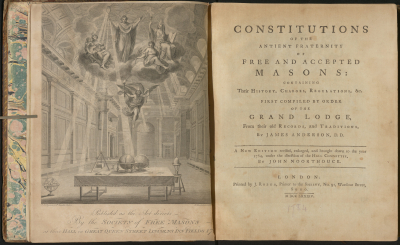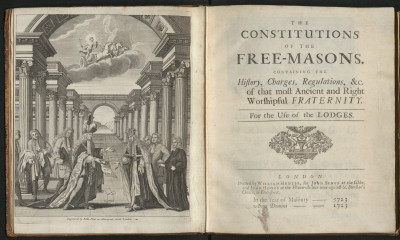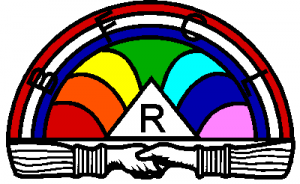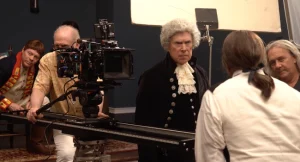In honor of the Three Hundreth Anniversary of the printing of the Constitution of Free-Masonry, the team at the Scottish Rite and Museum put together an exhibit in their reading room and an article on Anderson’s Constitutions. A special thanks to Jeff Croteau and the staff at the Scottish Rite Museum and Library for their hard work putting together this piece and all the hard work they do!
The Grand Lodge system of organized Freemasonry can be traced back to the 1717 founding of the Grand Lodge of England in London. The group published its first Constitutions in 1723. This work contained a mythologized history of Freemasonry, as well as the group’s Charges and Regulations, a set of rules governing lodges and the expected behavior of Masons. Although often referred to as “Anderson’s Constitutions,” after one of its authors, today, the 1723 Constitutions is viewed as the work of three people—the Reverend James Anderson (1679-1739), the Reverend Dr. John Theophilus Desaguliers (1683-1744), and George Payne (ca. 1685-1757).
The 1723 Constitutions begins with a “traditional history” of Freemasonry, written by Anderson. This narrative fancifully traces Freemasonry back to the biblical Adam in the Garden of Eden. Anderson’s history was intended—and should be read—as literary hyperbole, created to burnish the young organization by giving it a place within a well-known narrative. Following this is a section setting out rules and regulations governing who could join, as well as the Enlightenment principles of meritocracy and egalitarianism governing Freemasons. The ideas behind these rules and regulations still guide Masons today. They include civic responsibility, emphasis on personal merit above wealth or social standing, civility and morality, as well as a belief in a Supreme Being. Payne, who served as the Grand Lodge’s Grand Master in 1718 and 1720, wrote the General Regulations, which laid out the governance and operation of the Grand Lodge and its subordinate lodges.

The Constitutions were not a static document. They have been revised and reprinted many times. On view in the Van Gorden-Williams Library & Archives reading room are three editions that were printed during the 1700s, along with two reprints of the 1723 edition published during the 1800s. The most recent copy on view is a century old—a reprint of Anderson’s Constitutions published in 1923, to mark the two hundredth anniversary of its publication.
Three centuries after its publication, the Constitutions still contain ideals and sentiments that Masons look to today. Although the United Grand Lodge of England’s Constitutions have undergone extensive revisions over the years, its Constitutions, as well as those that help govern Grand Lodges throughout the world, can still be traced back to Anderson’s 1723 Constitutions.
To read more, click the link below!







